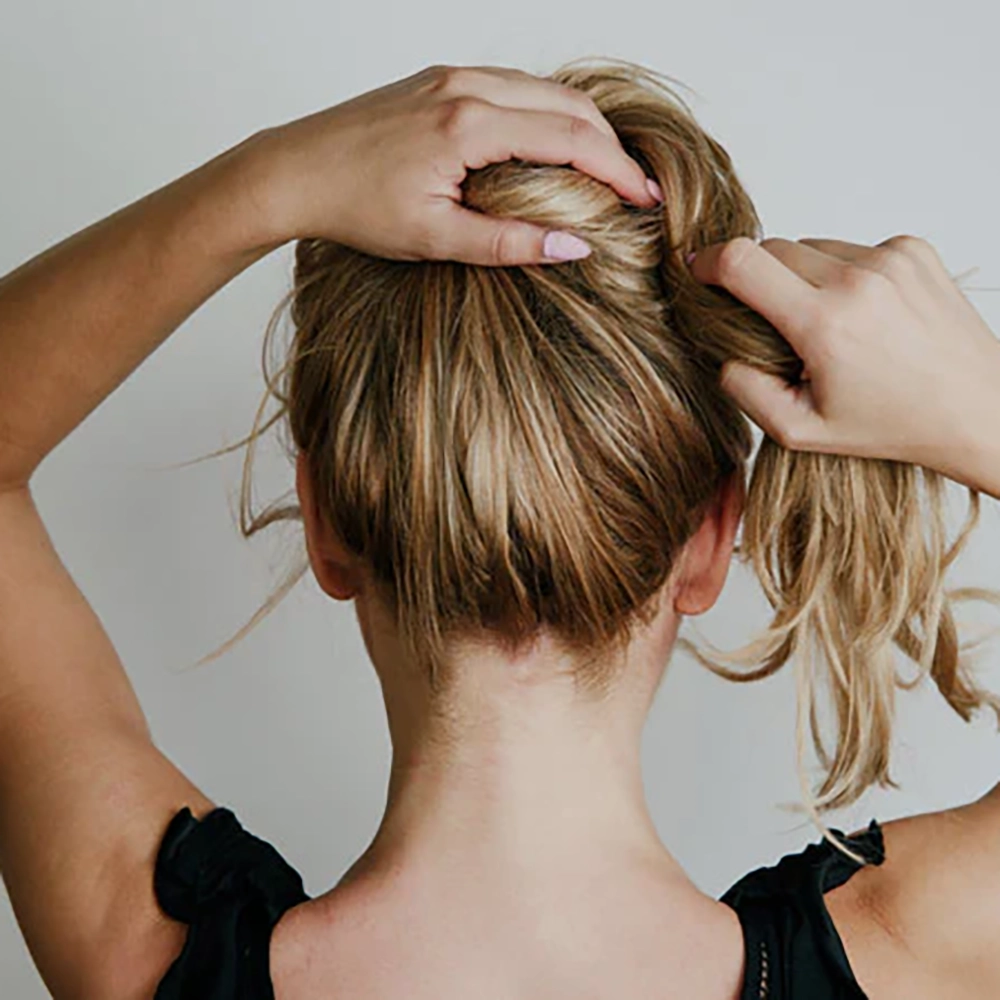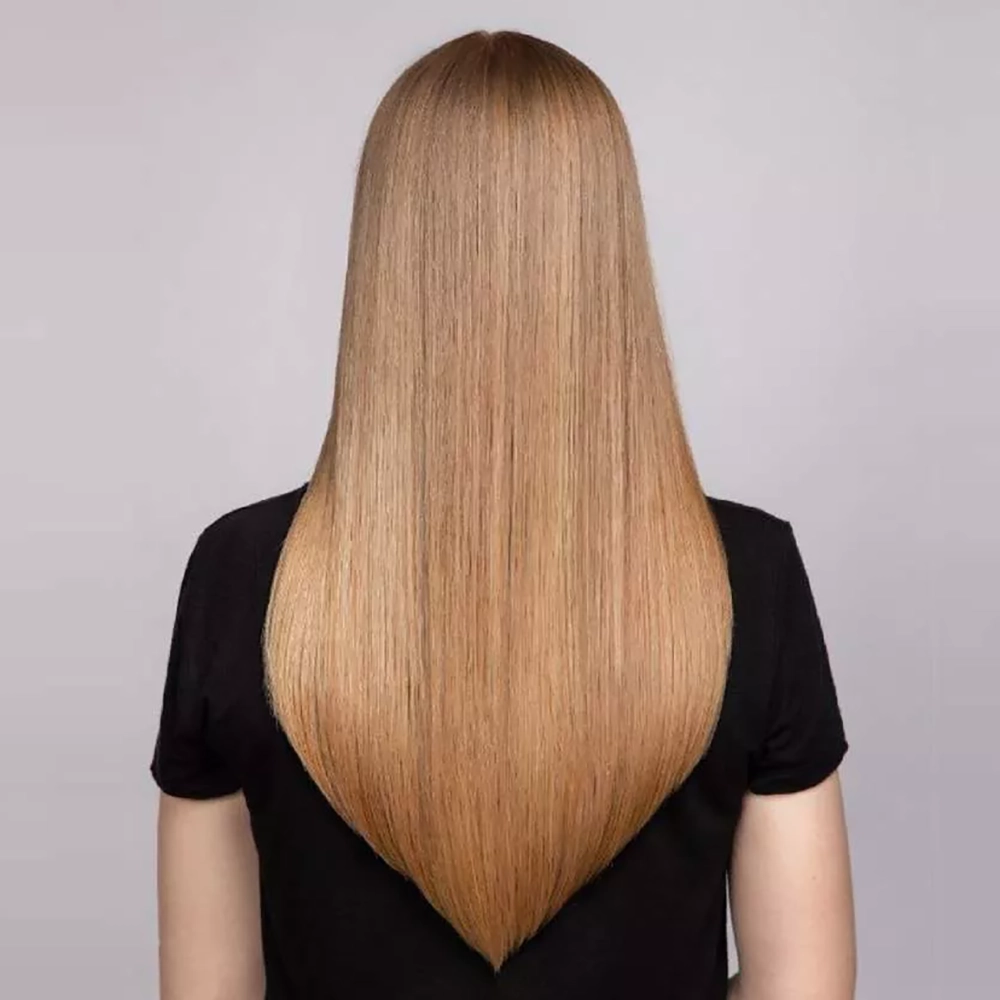Benefits of braiding long hair at night
Braiding long hair at night can offer numerous benefits for maintaining healthy and beautiful locks. Not only does it prevent tangles and knots, but it also reduces breakage and damage, promotes hair growth and thickness, and keeps hair neat and manageable in the morning. Additionally, braiding your hair at night helps to prevent it from rubbing against the pillow, which further protects the hair from frizz and breakage.
One of the key benefits of braiding long hair at night is the prevention of tangles and knots. When hair is left loose during sleep, it is prone to tangling and knotting, causing frustration and time-consuming efforts to untangle it in the morning. By braiding the hair before bed, the strands are secured in a controlled manner, minimizing the chances of tangles. This saves valuable time and prevents unnecessary hair damage.
Furthermore, braiding long hair at night can significantly reduce breakage and damage. When hair is left loose, it is more susceptible to friction and rubbing against the pillow, leading to split ends and breakage. Braiding the hair creates a protective barrier, reducing the friction and decreasing the likelihood of hair damage. This is especially beneficial for individuals with fragile or damaged hair.
In addition to preventing damage, braiding long hair at night also promotes hair growth and thickness. The gentle tension applied to the hair during braiding stimulates the hair follicles, increasing blood flow and promoting the delivery of essential nutrients to the roots. This promotes healthier hair growth and can contribute to thicker and fuller hair over time.
Lastly, braiding long hair at night keeps it neat and manageable in the morning. Instead of waking up to unruly and tangled hair, braiding allows for a more controlled and organized look when you wake up. This makes the styling process much easier and quicker, allowing you to start your day off on the right foot.
In conclusion, braiding long hair at night offers a multitude of benefits. It prevents tangles and knots, reduces breakage and damage, promotes hair growth and thickness, prevents hair from rubbing against the pillow, and keeps hair neat and manageable in the morning. With these advantages in mind, incorporating braiding into your nighttime haircare routine can help maintain healthier and more beautiful hair in the long run.
Preventing tangles and knots
Knots and tangles can be a real nightmare for anyone with long hair. Not only do they cause pain and discomfort when trying to brush them out, but they can also lead to breakage and damage to your precious locks. Luckily, there are some simple yet effective ways to prevent tangles and knots from forming in the first place. In this blog post, we will explore the importance of preventing tangles and knots and discuss some useful tips and techniques to keep your hair knot-free and manageable.
One of the best ways to prevent tangles and knots is by braiding your hair at night. Braiding helps to keep your hair contained and organized, minimizing the chances of it getting tangled while you sleep. It also serves as a protective style, reducing the friction between your hair and the pillowcase, which can contribute to tangling and knotting.
There are several different braiding styles that you can try for preventing tangles and knots. One popular option is the classic three-strand braid, where you divide your hair into three sections and cross them over each other until you reach the ends. This simple yet effective braid keeps your hair secure and tangle-free throughout the night.
| Braiding Styles | Description |
|---|---|
| French Braid | A stylish braid that starts at the crown of your head and incorporates more hair as you go. |
| Dutch Braid | Similar to a French braid, but the sections are crossed under each other instead of over. |
| Fishtail Braid | A trendy braid that involves splitting the hair into two sections and intertwining smaller sections from each side. |
In addition to braiding, regularly brushing your hair is crucial for preventing tangles and knots. Use a wide-toothed comb or a brush specifically designed for detangling to gently work through your hair from the ends to the roots. Be patient and avoid forcefully pulling or tugging on any stubborn knots, as this can lead to breakage.
Another helpful tip is to apply a leave-in conditioner or a detangling spray before brushing your hair. These products help to soften the hair strands and make them more manageable, reducing the chances of tangles and knots. You can also use a small amount of hair oil or serum to further enhance the smoothness and slip of your hair.
In conclusion, preventing tangles and knots is essential for maintaining the health and appearance of your long hair. By regularly braiding your hair at night, using the right brushing technique, and incorporating hair products that promote smoothness and manageability, you can bid farewell to those pesky tangles and knots. So, embrace these preventive measures and enjoy your effortlessly beautiful and knot-free hair!
Reducing breakage and damage
Braiding long hair at night is not only a stylish way to keep your hair intact while you sleep, but it also offers numerous benefits for the overall health and appearance of your hair. One of the key benefits of braiding long hair at night is reducing breakage and damage. When your hair is left loose, it is prone to tangling and getting caught on objects, leading to breakage and split ends. However, by braiding your hair before bed, you can minimize the friction and tension that occurs when your hair rubs against your pillow or gets tangled during sleep.
By braiding your long hair, you create a protective barrier that keeps your hair strands aligned and prevents them from rubbing against each other or against the pillow fabric. This reduces the chances of breakage, as the hair is not being subjected to constant friction and pulling. Additionally, braiding can also help to prevent split ends, as the hair is less likely to get tangled and damaged while you sleep.
Another advantage of braiding your long hair at night is that it helps to distribute the natural oils produced by your scalp. When your hair is left loose, these oils tend to accumulate at the roots, making them greasy, while the ends of your hair remain dry and brittle. However, by braiding your hair, you allow the oils to travel down the length of the hair strands, moisturizing and nourishing them. This can help to improve the overall health and appearance of your hair, reducing breakage and damage caused by dryness.
List of Benefits:
- Reduces breakage and split ends
- Minimizes friction and tension on hair
- Prevents tangling and knots
- Distributes natural oils for moisturized hair
- Improves overall hair health and appearance
Braiding Styles for Reducing Breakage:
When it comes to braiding long hair at night, there are several different styles you can try to maximize the benefits of reducing breakage and damage. Some popular options include:
| Braiding Style | Description |
|---|---|
| Dutch braid | A reverse braid that creates a raised effect, minimizing tension on the hair. |
| Fishtail braid | A unique style that resembles a fishtail, providing a secure and protective hold. |
| French braid | A classic braid that starts at the top and incorporates additional hair as you go. |
| Milkmaid braid | A chic style that involves braiding hair across the head like a crown. |
| Three-strand braid | A simple yet effective option for reducing breakage and keeping hair in place. |
Whichever style you choose, make sure not to braid your hair too tightly, as this can cause unnecessary strain and damage. A loose and comfortable braid will still provide the desired benefits while ensuring the health of your hair.
In conclusion, braiding long hair at night is a simple yet effective way to reduce breakage and damage. By creating a protective barrier, distributing natural oils, and preventing tangling, braids help to keep your hair healthy and manageable. Experiment with different braiding styles to find the one that suits your hair type and personal style best. With a little extra effort before bed, you can wake up to gorgeous, strong, and damage-free hair.
Promoting hair growth and thickness
When it comes to promoting hair growth and thickness, there are many different methods and techniques that people try. One popular and effective method is braiding long hair at night. Braiding your hair before bed can have numerous benefits for the overall health and appearance of your hair.
Firstly, braiding your hair at night can help to prevent tangles and knots. When you sleep, your hair is likely to move around and rub against your pillow, causing it to become tangled. This can lead to hair breakage and damage, which is a major obstacle to hair growth and thickness. By braiding your hair before bed, you can minimize the amount of movement and rubbing, resulting in less tangles and knots.
Additionally, braiding your hair at night can also help to reduce breakage and damage. When your hair is left loose while you sleep, it is more prone to getting caught on things such as your pillow or bedding. This can cause the hair strands to break and become damaged. By braiding your hair, you can keep it secure and protected, reducing the risk of breakage and damage.
Furthermore, braiding your hair at night can promote hair growth and thickness by improving blood circulation to the scalp. When you braid your hair tightly, it creates a slight tension on the scalp, which stimulates blood flow. This increased blood circulation can nourish the hair follicles, promoting healthy hair growth and thicker strands. So, not only does braiding your hair make it look neat and manageable in the morning, but it also has long-term benefits for hair growth.
In conclusion, braiding long hair at night is not only a convenient way to keep your hair neat and manageable, but it can also promote hair growth and thickness. By preventing tangles and knots, reducing breakage and damage, and improving blood circulation to the scalp, braiding can do wonders for the overall health and appearance of your hair. So, the next time you go to bed, consider braiding your hair and wake up to beautiful, healthy locks!
- Preventing tangles and knots
- Reducing breakage and damage
- Promoting hair growth and thickness
| Benefits of Braiding Long Hair at Night |
|---|
| Prevents tangles and knots |
| Reduces breakage and damage |
| Promotes hair growth and thickness |
Preventing hair from rubbing against pillow
Preventing hair from rubbing against a pillow is an important aspect of maintaining the health and appearance of your hair. This simple step can help prevent damage, breakage, and tangles, allowing you to wake up with soft, tangle-free hair in the morning.
One of the main benefits of preventing hair from rubbing against a pillow is to minimize breakage and damage. When your hair rubs against the pillowcase while you sleep, it can cause friction and lead to hair breakage. This is especially true for people with longer hair, as the longer strands are more prone to tangling and snapping. By taking measures to protect your hair from rubbing against the pillow, you can minimize the risk of breakage and ensure that your locks remain healthy and strong.
Another advantage of preventing hair from rubbing against the pillow is to reduce tangles and knots. Tangles can be a nightmare to deal with, especially in the morning when you’re in a rush to get ready. When hair rubs against the pillow, it can twist and tangle, resulting in frustrating knots that are difficult to detangle. By braiding your hair or using a silk or satin pillowcase, you can prevent tangles and keep your hair manageable, making the morning routine a breeze.
Keeping hair neat and manageable in the morning
Waking up in the morning and finding your hair in a tangled mess can be a frustrating experience. However, by adopting a few simple hair care practices before bed, you can ensure that your hair stays neat and manageable throughout the night and into the morning.
1. Brushing and Detangling:
To start, it’s essential to thoroughly brush your hair before going to bed. This will remove any tangles or knots that may have formed during the day and prevent them from becoming worse overnight. Use a wide-toothed comb or a brush with soft bristles to gently detangle your hair from the ends to the roots. Avoid using a brush with plastic bristles as they can cause breakage and damage to your hair.
2. Applying a Leave-In Conditioner:
Next, consider applying a leave-in conditioner before braiding or tying your hair up. A leave-in conditioner will help to moisturize your hair overnight, preventing it from becoming dry or brittle. Choose a lightweight leave-in conditioner that suits your hair type and apply it evenly throughout your hair, focusing on the ends.
3. Opting for Protective Hairstyles:
Choosing the right hairstyle before bed can make a significant difference in the manageability of your hair the next morning. Braiding your hair is an excellent option as it helps to prevent tangling and keep your hair organized. You can try different braiding styles such as a classic three-strand braid, a fishtail braid, or even multiple smaller braids. Make sure to secure the ends of your braids to prevent them from unraveling while you sleep.
4. Sleeping on a Silk or Satin Pillowcase:
The material of your pillowcase can also play a role in keeping your hair neat and manageable. Silk or satin pillowcases provide a smooth surface for your hair to glide over, reducing friction and preventing tangles. Unlike cotton pillowcases, which can absorb moisture and cause friction, silk or satin pillowcases maintain the hair’s natural oils and help to minimize breakage.
5. Tying Up Your Hair:
If you prefer not to braid your hair, tying it up in a loose bun or a ponytail can also keep it neat and manageable. However, be gentle when tying your hair and avoid using elastic bands that can cause breakage. Instead, opt for scrunchies or hair ties made of soft materials that won’t snag or pull on your hair.
Conclusion:
By incorporating these simple practices into your bedtime routine, you’ll be able to keep your hair neat and manageable in the morning. Remember to brush and detangle your hair, apply a leave-in conditioner, choose protective hairstyles, sleep on a silk or satin pillowcase, and tie your hair up gently. With just a little extra care, you can wake up to beautiful, tangle-free hair every day.
Different braiding styles for long hair at night
When it comes to maintaining long hair, especially while sleeping, finding the right braiding style can make a world of difference. Not only does braiding prevent tangles and knots, but it also reduces breakage and damage. Additionally, braiding long hair at night helps in promoting hair growth and thickness. So, if you’re tired of waking up to a tangled mess, it’s time to explore the different braiding styles that are perfect for taking care of your long hair while you sleep.
Braids have been a go-to hairstyle for centuries, and for good reason. They not only keep your hair secure and prevent knots, but they also distribute the natural oils from your scalp throughout the strands, promoting overall hair health. One popular style is the classic three-strand braid, also known as a regular braid. It’s simple to create and works well for most hair types. Another option is the Dutch braid, which is similar to a French braid but created by crossing the strands under, rather than over. This style adds a touch of elegance while keeping your hair neatly braided overnight.
If you’re looking for something more intricate, consider trying a fishtail braid. This style may take a bit more practice to perfect, but its unique appearance is well worth the effort. Alternatively, a rope braid is another great option for long hair. By twisting two sections of hair around each other, you create a stunning and secure braid that will stay in place all night long. Whichever style you choose, be sure to secure the ends with a hair tie or elastic band to prevent unraveling while you sleep.
| Braiding Style | Description |
|---|---|
| Three-Strand Braid | A simple and versatile braid created using three strands of hair. |
| Dutch Braid | Similar to a French braid, but the strands are crossed under, rather than over. |
| Fishtail Braid | An intricate braid created by weaving small sections of hair together. |
| Rope Braid | Two sections of hair twisted around each other to create a secure and stylish braid. |
By incorporating these different braiding styles into your nighttime routine, you can keep your long hair tangle-free, reduce breakage, and promote healthy hair growth. Experiment with different styles to find the one that works best for you. Remember to be gentle when handling your hair and avoid pulling too tightly while braiding. With a little practice, you’ll wake up each morning with beautifully braided hair that is easy to manage and style for the day ahead.


























